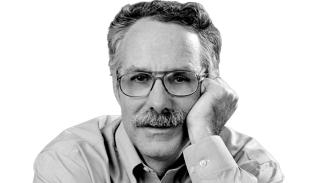
[OP-ED]: Trump’s great growth debate
MORE IN THIS SECTION
In its budget, the White House projected annual inflation-adjusted economic growth of 3 percent over the next decade. This almost equals the average rate of 3.2 percent since 1950. Meanwhile, the Congressional Budget Office and many private economists project an annual growth rate of around 2 percent, or roughly what it has been since 2010.
Predictably, the Trump forecast has been savaged. Jason Furman, head of the Council of Economic Advisers under President Obama, notes that the gap between the administration’s forecast and the “Blue-Chip” consensus of private forecasters is much wider than anything experienced in “the 24 budgets under Presidents Bill Clinton, George W. Bush and Barack Obama.” Furman estimates the chances of reaching 3 percent growth at about 1-in-25.
Economist Simon Johnson of the Massachusetts Institute of Technology argues that adopting the faster growth rate is intended to justify tax cuts. “If administration officials acknowledge that a 3 percent annual rate is not feasible,” he writes, “they would need to face the reality that their forecasts for tax revenues are too high, and that their proposed tax cuts ... would dramatically increase the budget deficit and the national debt.”
The economy’s slowdown stems from two causes. One is an aging population. Large numbers of retiring workers are blunting growth of the labor force. The CBO expects the workforce to increase 0.5 percent annually, about a third of the post-1950 rate.
Slumping productivity is the other major cause. Productivity -- efficiency -- reflects technology, worker skills and competitive markets, among other things. The CBO is projecting that productivity will grow 1.3 percent annually. That’s down from the post-1950 average (1.7 percent) but up from recent experience (0.5 percent since 2011). Taken together, low productivity and labor force gains guarantee a plodding economy.
Precisely, retort some conservative economists. But these conditions are not immutable. The right policies can change behavior. Lower tax rates, less regulation and limited government spending can boost growth by raising after-tax profits and promoting investment.
RELATED CONTENT
“Focused primarily on ‘stimulus’ in the short-term, the conduct of economic policy [in the post-financial crisis years] did little to reset expectations higher for long-term growth,” write economists John Cogan, John Taylor and Kevin Warsh of Stanford and Glenn Hubbard of Columbia in a paper. “That policy failure ... adversely [affected] consumption and, especially, investment spending.”
It is not, they argue, outlandish to think that productivity and the labor force will respond to better policies. The needed increases are well within historical experience. For example: From 1999 to 2012, non-farm business productivity equaled or exceeded 2.3 percent two-thirds of the time. Similarly, July’s 4.3 unemployment rate suggests more people may join the labor force.
Be skeptical of both sides.
In my nearly half-century of covering economics, I have become convinced that economists don’t understand productivity except at a general level. Put differently, most economists have failed to predict major productivity changes, whether up or down: the slump in the 1970s; the 1990s revival; and the present collapse.
Productivity is too complex. It may respond to policy, but it also responds to many other things, including something as vague as a country’s “economic culture.” The trouble is that if you can’t predict productivity, you can’t predict economic growth. (Why? Because productivity is usually a big part of growth.)
It’s guesswork. To resolve these problems, economists often assume that present trends will continue. It’s a reasonable, if timid, response. Still, it ignores the prospect of a dramatic break from the present. Trump’s economic assumptions are optimistic and self-serving. But they are not impossible.
Yet, even if Trump’s 3 percent growth materializes, it won’t suffice. His objective is to balance the budget by 2027. On paper, faster growth does that. But the underlying assumptions of government spending over the decade are unrealistic. Trump would cut spending on defense and domestic “discretionary” programs (justice, regulation etc.) by half, as a share of the economy. This won’t happen -- and shouldn’t.
Here is the debate’s larger significance: We can no longer grow our way out of serious conflicts, if we ever could. There isn’t enough money to satisfy all our demands, even at higher rates of economic growth. There will be conflicts between private and governmental spending; between national and local spending; between health spending and non-health spending; and between spending on the old versus the young. The present is contentious; the future may be worse.







LEAVE A COMMENT:
Join the discussion! Leave a comment.